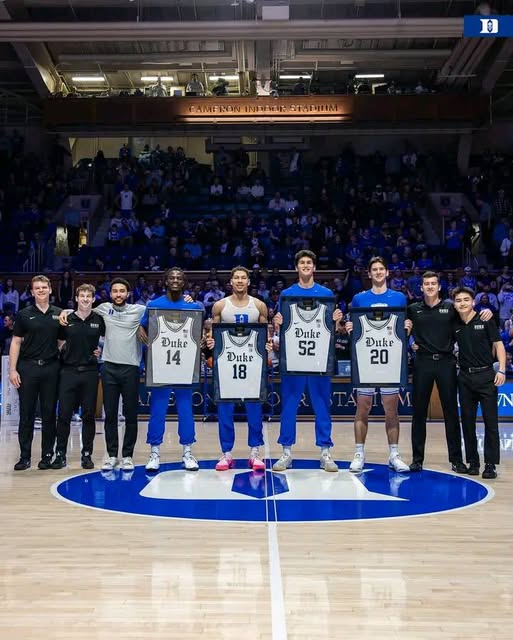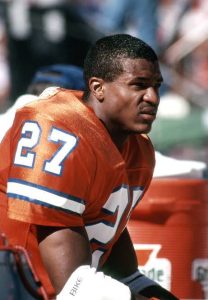
Something seismic is happening in Durham, North Carolina. The blue-blood institution synonymous with March Madness dominance, NBA pipeline prestige, and Cameron Indoor electricity is recalibrating in a way that mirrors the evolving nature of college basketball. The Duke Blue Devils, coming off a rollercoaster 2024–25 season that ended earlier than expected, are now positioning themselves for a dramatic resurgence—and they’re doing it through a perfect storm of elite high school recruiting and strategic movement in the transfer portal.
What has just taken place at Duke is nothing short of a post-portal power shift—a redefining moment that could return the Blue Devils to the pinnacle of college hoops and set a precedent for the program’s trajectory under head coach Jon Scheyer.
Reloading, Not Rebuilding
Let’s start with the foundation: Duke’s incoming freshman class is nothing short of elite. It ranks in the top three nationally, depending on which recruiting service you consult. More importantly, it’s constructed with intention—not just a collection of 5-star talent, but a blend of positional balance, two-way versatility, and elite basketball IQ.
Headlining the class is 5-star wing Jalen Haralson, a 6-foot-7 combo guard from Indiana with NBA size and scoring instincts. Haralson is widely viewed as a one-and-done lottery pick whose ability to create off the dribble and defend multiple positions instantly upgrades Duke’s perimeter play.
Joining Haralson is power forward Caleb Wilson, a top-10 recruit out of Georgia who brings length, shot-blocking, and a growing offensive skillset. At 6-foot-9, Wilson is exactly the type of modern big who can switch on defense and stretch the floor on offense.
Rounding out the group are shooting guard Isaiah Evans, a pure scorer from North Carolina who turned down offers from Kentucky and UNC to stay in-state, and point guard Darius Acuff Jr., a floor general out of Michigan who’s known for his tempo control, leadership, and clutch gene.
These freshmen provide the sizzle—but what makes this transformation truly potent is what Duke is doing in the transfer portal.
Transfer Portal Gold: Veteran Balance
Duke has historically avoided deep entanglement in the portal frenzy, instead relying on their pipeline of NBA-bound prep stars. But the new era of college basketball demands agility. Scheyer and his staff have responded in 2025 with a savvy approach: blending experience with star potential.
Among the notable additions is Malik Presley, a 6-foot-6 wing from Texas State who turned heads last season as one of the most efficient scorers in mid-major basketball. Presley averaged 17.8 points and 6.5 rebounds while shooting 43% from three—precisely the kind of plug-and-play contributor Duke needs.
They also landed Javonte “JT” White, a junior combo guard from Colorado who averaged 12.4 points and 4.8 assists while displaying an ability to defend opposing lead guards. White gives Duke a capable secondary ball-handler and veteran presence in late-game situations.
To reinforce the frontcourt, Duke secured Zach Keller, a former top-100 recruit from Wake Forest who blossomed into a dependable big man in his junior year. Keller brings interior toughness, rebounding, and rim protection—complementing the raw talent of incoming freshman Caleb Wilson.
The portal additions aren’t headliners in the way of power-conference superstars—but that’s by design. Duke has added experienced, efficient, high-character players who can elevate the freshmen without disrupting team chemistry.
Departures That Made Room for the Shift
Of course, for every arrival, there must be a departure—and Duke’s 2024–25 roster has seen significant turnover.
Star center Kyle Filipowski declared for the NBA Draft after a standout sophomore season, and guard Tyrese Proctor followed suit shortly after. Both players were pivotal to Duke’s offense and will be missed, but their exits created the necessary space for a new core to take hold.
Other departures include reserve wing Mark Mitchell, who entered the transfer portal and committed to Michigan State, and backup center Christian Reeves, who left in search of more playing time.
Rather than panic or scramble, Duke pivoted with precision. Their recruiting plan anticipated these exits, and their portal strategy ensured a steady infusion of veteran experience.
Scheyer’s Blueprint: Culture Meets Talent
This transition underscores a key evolution in Jon Scheyer’s coaching philosophy. After two seasons still shaped largely by the shadow of Coach K, Scheyer is now operating with his own blueprint—a vision centered on culture, defense, and player development.
“Duke basketball has always been about competing at the highest level, but now we have to be even more strategic,” Scheyer said in a recent interview. “The portal gives, and the portal takes. But when you combine elite freshmen with hungry veterans, you can build something sustainable.”
Scheyer’s leadership is starting to attract national praise. His emphasis on internal development, team-first mentality, and tactical adjustments on both ends of the floor is starting to pay dividends. With this new roster, Duke may be entering the most balanced phase of the post-K era.
Style of Play: Versatile and Relentless
The 2025–26 Duke Blue Devils won’t just look different—they’ll play different.
Expect a faster pace with two capable ball-handlers on the floor in Acuff and White. On offense, look for spacing, cutting, and drive-and-kick actions to maximize the shooting ability of Evans and Presley. Jalen Haralson will be the centerpiece of the offense—a wing who can create his own shot and elevate others around him.
Defensively, this team could be Scheyer’s most aggressive yet. Wilson and Keller provide rim protection, while Haralson and Presley can switch across three positions. Duke plans to deploy more full-court pressure and zone traps, leveraging their length and depth to disrupt opposing offenses.
It’s not just about scoring 80 points a game—it’s about making every possession a battle. That toughness has been missing in recent years but appears to be a renewed point of emphasis in Durham.
What Success Will Look Like
For Duke fans, success is often measured in banners and Final Fours. But in the chaotic world of modern college basketball, the 2025–26 season offers Duke something deeper: a reassertion of identity.
Success will mean seeing Haralson emerge as an NBA-ready star while Evans and Acuff grow into foundational players. It will mean Presley and White becoming glue guys who hit big shots and lead in the locker room. It will mean making deep runs in March, yes—but it will also mean watching a team that fits together like a puzzle instead of a patchwork.
With UNC and Kentucky undergoing their own transitional periods and programs like Alabama and Houston rising fast, Duke’s timing couldn’t be more critical. They’re not just trying to win next year—they’re trying to lead the next wave of college basketball.
National Outlook: Contender Status?
Where does this put Duke on the national radar? Most early projections place the Blue Devils in the top 5 of preseason polls. They’re widely considered a Final Four contender, with CBS Sports ranking them No. 2 behind only reigning national champion UConn.
Analysts point to Duke’s depth, the blend of youth and experience, and the unique upside of their freshman class as reasons for optimism. ESPN’s Jay Bilas said it best: “This is the first Duke team in years that doesn’t just have star power—it has a true rotation, built to win now and win ugly if needed.”
In a landscape where one or two injuries can derail a season, Duke is as well-equipped as anyone to withstand adversity. They’ve built a roster that can go 10-deep, adapt to different styles, and evolve over the course of the year.
Final Thoughts: The Shift is Real
What has just taken place at Duke is not just a reshuffling of the roster—it’s a reshaping of philosophy. The post-portal world demands that even blue-bloods evolve, and Duke is showing they can do so without compromising their core values.
The 2025–26 season could mark the return of Duke as a force not just in name but in execution. The Blue Devils are no longer relying solely on lottery picks or one-and-done hype—they’re building a team with layers, balance, and bite.





